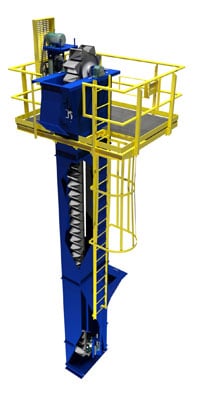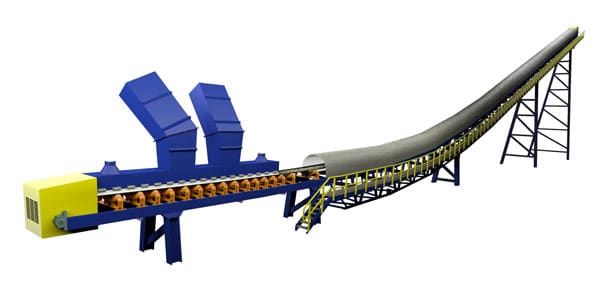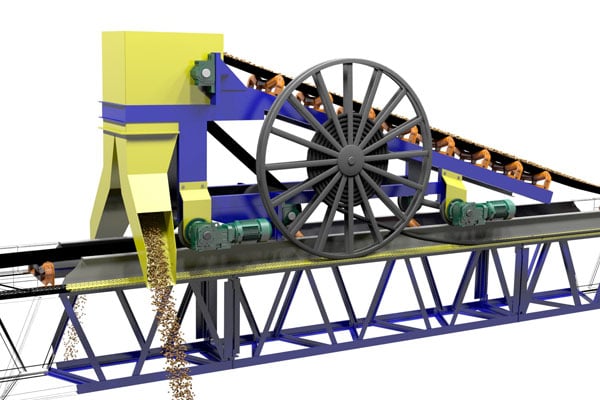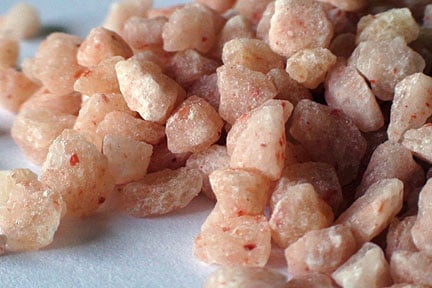Handling a demanding material such as potash requires dependable performance from each piece of equipment in a processing facility. The need for reliability holds especially true for material handling equipment. Bucket elevators, belt conveyors, and so forth must be designed to manage the challenges potash brings to a facility. FEECO offers a wide range of bulk material handling equipment capable of withstanding potash’s material considerations while complementing the entire processing system.
About Bulk Material Handling Equipment
Bulk material handling equipment transports potash from one area of a processing facility to another, adding automation and flexibility to an overall system. Bulk material handling equipment is especially valuable when processing bulk materials such as potash, lending efficiency and safety to an otherwise arduous task.
While the design structure of each product line in FEECO’s bulk material handling equipment is respectively consistent, each piece of equipment is custom manufactured to address material and process considerations, accommodate facility requirements, and meet customer design specifications.
Common Potash Handling Equipment
Bucket Elevators

Bucket Elevators are a common piece of bulk material handling equipment utilized in potash processing facilities, with double chain, continuous style bucket elevators being the most popular version. Single chain options are also available, but a double chain is most often selected due to its increased capacity and increased height capability, which is often required in potash compaction circuits. Bucket elevators transfer potash vertically, operate at low speeds, and are able to handle a high capacity of material. In addition to customizing bucket elevators to handle the material considerations of potash, FEECO also provides several options, such as large access doors for ease of maintenance, various types of drive arrangements, service platforms, etc.
Troughed Belt Conveyors

Troughed belt Conveyers are very commonly used in potash processing and potash compaction facilities. Belt conveyors consist of a continuously moving, carrying surface (known as a belt) that rotates around two or more pulleys. As the belt rotates, material is transported to the desired location. FEECO has a wide range of conveyor options that assure proper load and transfer points are accomplished. In addition, FEECO offers optional equipment (e.g. belt trippers, loading skirtboards, belt cleaner systems) to ensure the best material conveying solution is provided.
Belt Trippers

Potash processing facilities especially benefit from adding a Belt Tripper to a potash conveyor system. This complementary piece of equipment offers the flexibility to use more than one discharge location (fixed or movable) off of a conveyor system. When storing potash, this option is especially useful in creating a long, continuous pile.
Potash Material Considerations
Potash is a mildly corrosive and abrasive material, making it difficult to handle. Robust, long-lasting equipment is recommended for all aspects of potash processing, especially material handling equipment. FEECO starts with heavy-duty bulk material handling equipment and then employs special custom considerations tailored to support potash processing facilities. A few examples of potash-based customization are listed below.
- Various alloys may be used to defend against corrosion and other issues.
Example: Bucket elevator boot sections may be constructed of stainless steel to prevent damage that may otherwise occur from regular use of a wash down system. - High- wear areas are enhanced with heavy-duty construction, helping these vulnerable zones better accommodate the abrasive material.
Example: Transfer chutes and inlet loading areas (standard high wear areas in a conveyor) are equipped with wear-resistant liners. - Potash fines can cause failure issues. As a result, protective measures are implemented in areas that would be otherwise damaged by dust buildup.
Example: Auxiliary seals for bearings are often used in these areas.
Potash treated with a special solution may cause wear or service issues for certain equipment areas.
Example: Potash that is treated with amine solution adversely affects rubber components such as conveyor belts. To counteract this issue, special cover compounds are utilized.
Handling a demanding material such as potash requires heavy-duty equipment designed to withstand problematic handling considerations while benefiting the overall potash processing and potash compaction facility. FEECO is a leader in the design and manufacturing of potash handling equipment, with a reputation for providing customer service that surpasses expectations. From individual bucket elevators, to full pelletizing potash facilities, FEECO has your potash needs covered. For more information on FEECO’s potash expertise, contact us today!


